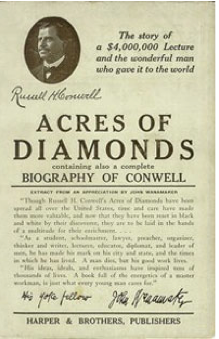There is an adage among folks who work in innovation and creativity that the more ideas you have, the more likely you will have great ones—you just don’t know which ones they are. Often they occur at the intersections of ideas…more random than scientific, more by chance than by choice, and more likely to come from luck than rigor.
This is very important if you are going to find a Blue Ocean Strategy. While you are trying to grow your business by adding value in innovative ways, the opportunities could be right under your nose. You just aren’t finding them, aren’t able to see the possibilities as opportunities. Is there a way for you to turn observation into innovation to sustain your growth? Yes!
Workshops Are Teaching Me, Too!
I often conduct workshops with CEOs on Blue Ocean Strategy and more often than not, I see that they have a hard time imagining customers in the future—beyond their current business as it is today. Blue Ocean Strategy is all about finding unmet needs and non-users, not simply carving out a me-too space in a current market and doing better. To compete using Blue Ocean thinking is about market creation, not competition.
So I shifted the workshops to focus on how to better “see, feel and think” about those customers of today and tomorrow with fresh eyes. What were the unmet needs those business leaders could help solve? Where were customers in “pain,” asking for help that they were discounting because it wasn’t what they sold or did?
I typically have a three hour window to help CEOs of mid-market companies go exploring. That means they have to be able to step outside their current reality and imagine possibilities—not that easy for people who have grown their businesses successfully, or perhaps not so successfully, and are comfortable with what they are already doing.
I begin with a reminder of the Acres of Diamonds speech by Russell Conwell, founder of Temple University:
All too often, “the greatest opportunity for success lies right under your feet, your acres of diamonds.” 
Before his death in 1925, Conwell would deliver his speech over 6,000 times around the world, impacting countless lives.
Where are your “Acres of Diamonds”?
When I speak with these CEOs about where they might find their next “big” customers, their acres of diamonds, we talk about applying some simple corporate anthropology to their businesses. If they were to step out and look at their company with fresh eyes, what would they see? A fertile area that could becomne their acres of diamonds! In one instance, CEOs actually came up with some very big ideas that might open new markets for their companies, and in the near term— not way in the future. And they did it together as teams in less than 3 hours. Amazing!!
How? Because the ideas were actually already floating around in their heads. They had seen or heard things that had gotten them thinking. What they needed was a process of discovery…a way to go exploring for their blue ocean.
Putting Observation into Innovation
With that as an idea for you to think about, let me share some ways you can put observation, even randomness and chance, into your business and perhaps even come up with some big ideas yourself.
EAC/Integrated Power Solutions
Mark, a former client of ours in the battery OEM business and the subject of a chapter in my new book On the Brink, had a big problem—growth had stalled. Ideas had dried up, the business was changing and he was being left behind, even though they had been a successful business for over 20 years. New sales management had not reinvigorated sales. Not an uncommon problem. So, we took them outside to go exploring. Where did we go?
- First we went to visit their customers but not to talk to the same purchasing agents or engineers. Rather, we went to speak with the C-suite—Chief Marketing Officers or CFOs or R&D or CEOs. The idea was to learn what they were doing so we could see how to help them better. They were amazing and shared so many of the pain points and challenges.
- Then we went to totally different markets where they had never done much business. We specifically went observing to find how they were dealing with batteries.
During one of these listening sessions, an epiphany occurred. Not by design but by chance, Mark and his team heard something that lit a light bulb and off they went. What the customer said was simply: ”We really don’t want batteries. We need lighter, longer, stronger power solutions. We want our tools to last longer and be lighter than the competitors.” Mark said, “But I thought they just wanted us to build their batteries to their specifications and deliver them on time. What’s with this lighter, longer power solution?”
After that, the conversation never stopped. “How do we stop building ‘batteries’ and create ‘lighter, longer, stronger power solutions?’ What are those anyway? Are we an OEM or do we create our own solutions? Can we leverage rechargeable batteries? How about lithium ion batteries? What are our customers really asking for anyway?”
Blue Ocean Strategies Are All Around You

Traditional strategic thinking traps these business owners into seeing where their strengths and weaknesses are and assessing their opportunities and threats, but all in a rather constricted business market space. These are the markets that they know well and in which they have grown their businesses. But in changing times, the old is not always the place to hang out. This is not a rule-driven world but rather, a chaotic one filled with uncertainties and the unexpected. How to take advantage of that and turn frustrations into success stories?
In this blog, I want to challenge you to think differently about what really matters to grow your business. Maybe the most important step is to try lots of things and not judge them until you see what might really work.
What might this mean for you? How could you put serendipity to work for you? Where is that “luck” you had before and want again? Can you make that magical moment happen when luck and skill come together, often at the intersections of ideas?
More Readings
You might find these helpful as you begin your own journey of exploring and discovery to find your Blue Ocean Strategy—or at least your customer of tomorrow, awaiting you today.
Would you like a workshop for your organization?
Want to try some anthropology and see how it might help you find your customers of tomorrow? Please give us a call or email us at info@simonassociates.net.
Don’t forget to order your book(s) to learn more about how Blue Ocean Strategy and anthropology have helped companies find their “acres of diamonds.”
And get a lot of free stuff that comes with it.



